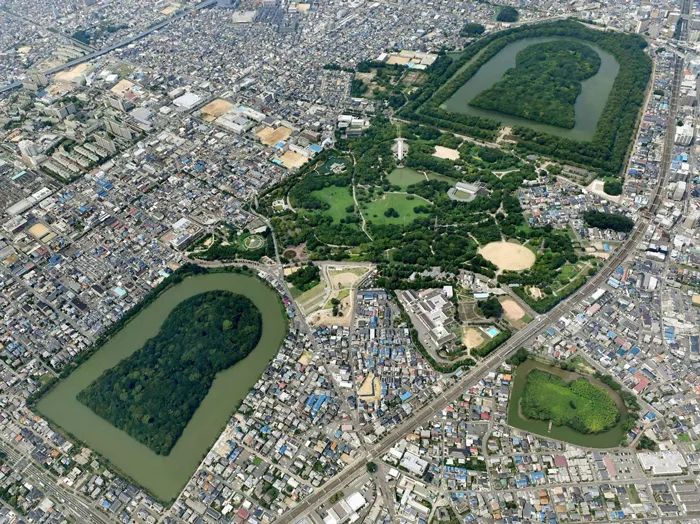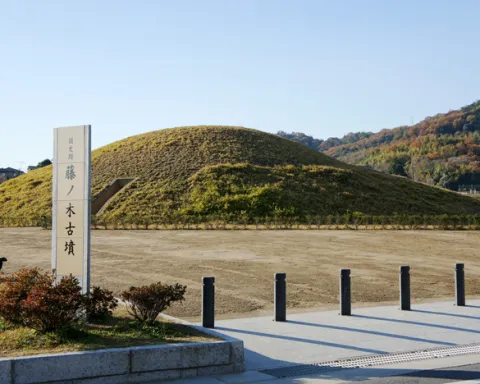Burial Mounds and Korean Connections (3rd-8th Centuries AD)
The Legacy of Japan’s Kofun Period
Between the 3rd and 8th centuries AD, an estimated 160,000 burial mounds, known as kofun, were constructed across Japan. These monumental tombs, built for the elites of ancient Japan, are significant markers of the Kofun period (AD 250-710). While the practice of burial mound construction dates back to the preceding Yayoi period, the scale and grandeur of kofun make them distinct.
These tombs exhibit connections to broader East Asian funerary traditions, emulating aspects of the Chinese and Korean burial customs. The practice has continued sporadically into modern times, as seen in the burial of Emperor Hirohito in 1989 beneath a mound, which contrasts with the widespread contemporary Japanese practice of cremation.

The Naming and Significance of Kofun
In the late 19th century, many kofun were officially attributed to historical figures mentioned in ancient Japanese chronicles, particularly the Kojiki (712 AD) and Nihon Shoki (720 AD). These tombs, considered sacred due to their connection to the imperial lineage, were placed under the guardianship of the Imperial Household Agency following Japan’s defeat in 1945. Despite ongoing debates regarding their historical occupants and potential Korean ancestry of Japan’s imperial family, access to these sites remains restricted.
In 2019, the Mozu and Furuichi kofun clusters in Osaka were inscribed as UNESCO World Heritage sites. The largest among them, Daisen Kofun, attributed to Emperor Nintoku, spans 486 meters, ranking among the world’s largest burial monuments. While archaeologists recognize these sites by their geographical names, official documents continue to use the historical attributions, reinforcing their cultural significance.
The Political and Cultural Influence of Kofun Elites
The Mozu and Furuichi kofun clusters comprise 49 tombs that reflect the emergence of centralized power in Japan during the 5th and 6th centuries AD. The Yamato clan, based in this region, established political dominance, leading to the formation of Japan’s first state-level society. The period saw significant geopolitical interactions between Japan, the Korean kingdoms of Paekche, Shilla, and Goguryeo, and various Chinese dynasties.

Structural and Ritual Aspects of Kofun
Kofun vary in size and design, with the most prominent being keyhole-shaped mounds. These structures, previously thought to be uniquely Japanese, have also been identified on the Korean peninsula. Early kofun featured summit burials, while later tombs incorporated elaborate burial chambers within the mound. Many contained megalithic chambers accessible through passageways, and ceremonial platforms in the flaring sections of the keyhole-shaped tombs.

Unlike Chinese burial customs, which often included human sacrifices, Japan transitioned from similar practices to the use of terracotta figurines called haniwa during the reign of the legendary Emperor Suinin. The grandeur of kofun was enhanced by surrounding moats and surfaces covered in polished stones, ensuring their visibility from great distances. A reconstructed example, Goshikizuka Kofun in Kobe, illustrates the monumental nature of these tombs.
Notable Kofun Excavations
Excavations of kofun have generated widespread interest. A significant discovery was the Fujinoki tomb in Nara, near the Horyuji temple. Despite its relatively modest size (48m in diameter, 9m in height), Fujinoki was remarkable for being untouched by grave robbers. Investigations in the 1980s, using fiber-optic technology, revealed a 6m-long megalithic chamber containing an intact sarcophagus.

The grave goods within Fujinoki included thousands of gilt-bronze artifacts, silk brocade remnants, Sue stoneware, Haji pottery, mirrors, beads, and elaborate horse trappings. Some items, such as saddles and harnesses adorned with depictions of fish, elephants, and phoenixes, bore similarities to artifacts from China’s Northern Yan kingdom, yet had no known parallels in Japan or Korea. The presence of oversized funerary shoes and a crown suggests that the tomb housed imperial princes, possibly linked to a political purge in 587 AD.
The continued study of kofun provides critical insights into Japan’s early state formation, continental interactions, and the elite’s expressions of power through monumental burial practices.


